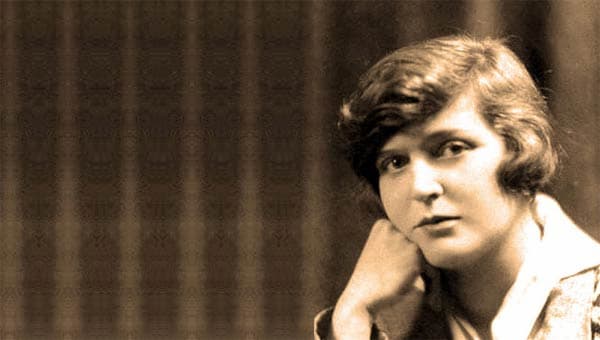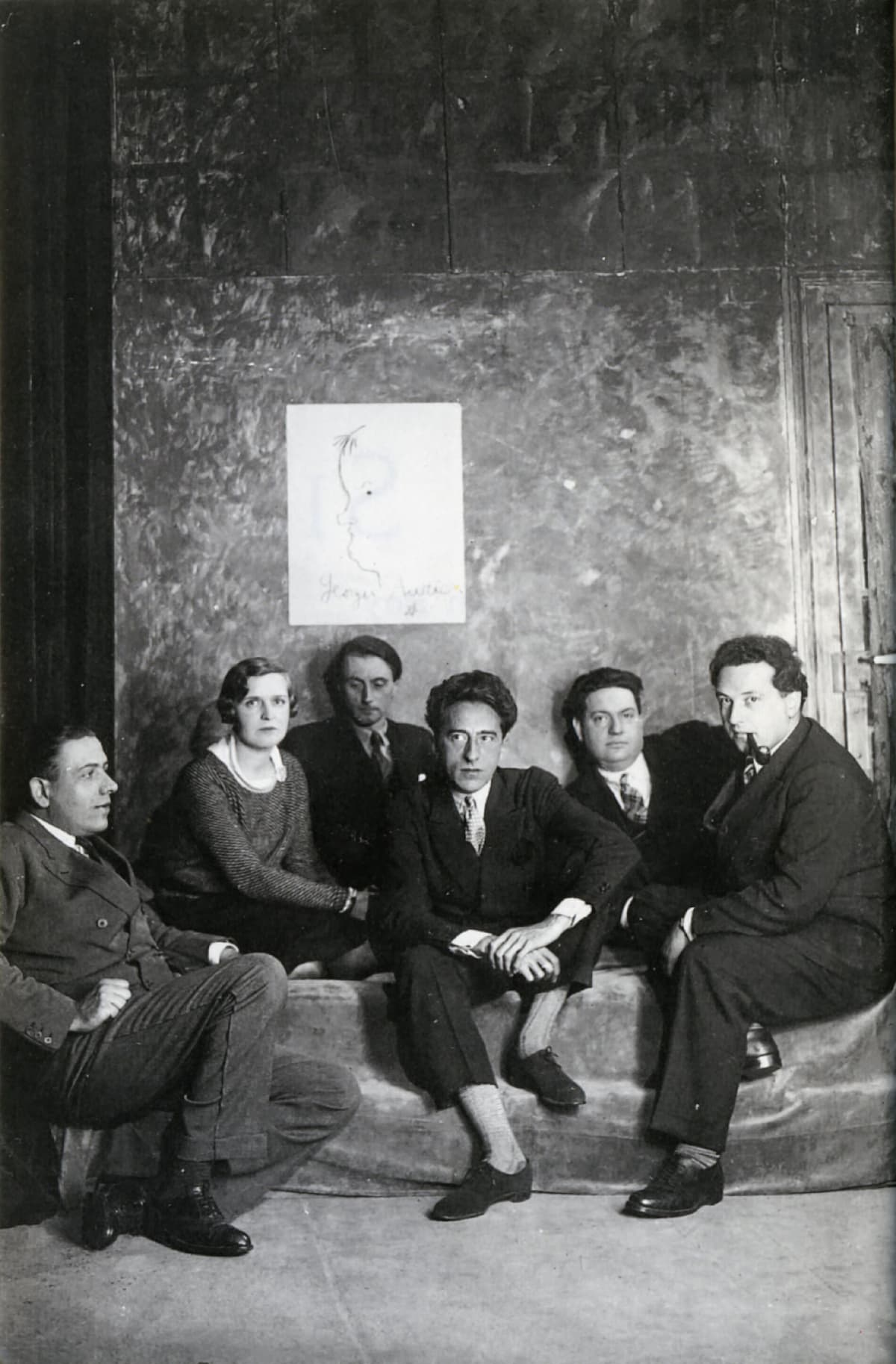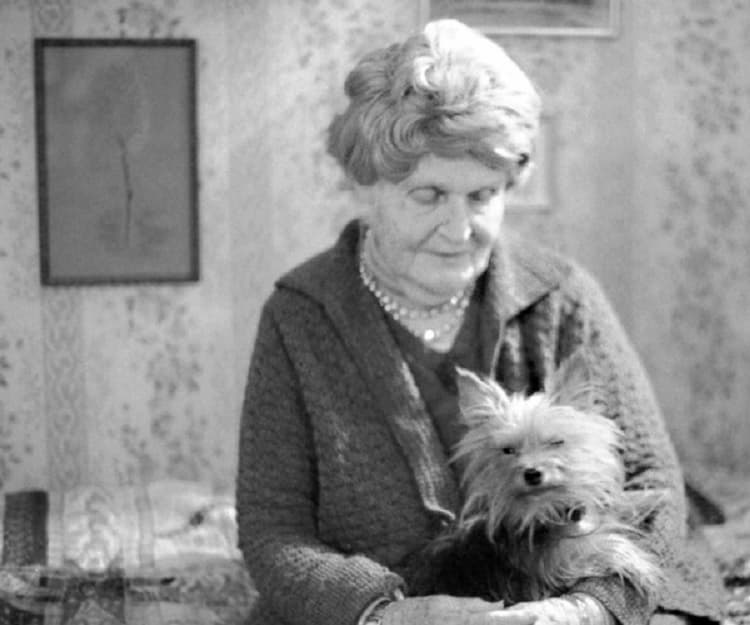Germaine Tailleferre is a composer who often flies under the radar for a number of reasons. She was a woman, and women composers have historically faced a harsher battle for recognition. She was part of a larger group of composers known as Les Six, and sometimes she’s remembered more for her friendships with her colleagues than for her work itself. Her music tends to be lighter, which many people wrongly assume makes it somehow less important. And she was famously modest and not prone to promoting herself.
So to celebrate her birthday, here are thirteen facts you may not have known about Germaine Tailleferre:

Germaine Tailleferre © icareifyoulisten.com
1. She changed her name because her father refused to support her musical career. She was born 19 April 1892 in a suburb southeast of Paris. She showed an early fascination with music, but her father was dead set against her ever pursuing a career in the field, fuming that professional women musicians were akin to prostitutes. She studied at the Paris Conservatoire in 1904 but was forced to attend a convent school by her father. It was years before she was allowed to return to the Conservatoire. In retaliation, she abandoned her father’s name of Taillefesse and went by Tailleferre instead.
2. She studied with French musical legends Maurice Ravel, Claude Debussy, and Charles-Marie Widor, and won many prizes. Classmate Francis Poulenc raved about her: “How ravishing our Germaine was in 1917, with her schoolgirl’s satchel full of all the Conservatoire’s first prizes! How kind and gentle she was! … What a charming and precious contribution her music makes!”
Germaine Tailleferre: Romance in A Major (Nicolas Horvath, piano)
3. She taught music to help support her family. Her abusive father died in 1917, leaving her mother a widow with health issues.
4. Erik Satie loved her music and even called her his fille musicale, or his musical daughter. He was so impressed with what she wrote that he began programming her works during the influential private concerts that he gave in Paris.

Les Six, left to right: Francis Poulenc, Germaine Taileferre, Louis Durey, Jean Cocteau, Darius Milhaud, Arthur Honegger. Sketch of Georges Auric on the wall behind them. © Music and the Holocaust
5. Her works were performed with five friends at a January 1920 concert, and it led to a famous nickname we still use today. A newspaper review referred to the six composers as Les Six, and the label stuck, even though the biggest similarity they shared was that they all had received the endorsement of Erik Satie. Eventually, as each of Les Six matured and followed their own creative paths, some listeners and critics began objecting to the label, feeling that it suggested a kind of creative or ideological cohesion that had never actually existed in the first place.
Germaine Tailleferre: Violin Sonata No. 2 (Franco Mezzena, violin; Bruno Mezzena, piano)
6. To earn money, she worked as a music teacher and a milliner. Her teacher Maurice Ravel encouraged her to enter composition contests for the prize money.
7. Her first marriage was a disaster. In 1926 she married a famous American caricaturist named Ralph Burton. He hated that she was a professional composer, and he married her in part because he thought she’d be a good French cook for him. “I had forgotten that a young woman who was married, even to an American, was never free,” she wrote later. In one terrifying incident, when he found out she was pregnant, he wanted to shoot Germaine in the stomach to induce an abortion. She miscarried a few days later. In a string of tragedies, Tailleferre’s mother died in 1930, her divorce with Burton was finalized in April 1931, and then Burton died by suicide a few weeks later…an event that became front-page news in New York.
8. She married again in 1932 to a lawyer named Jean Lageat, but the second marriage was no happier than her first. She wanted badly to have a baby, and she got pregnant while they were dating. Lageat consequently proposed marriage and they had a daughter together named Françoise. But tragically, Lageat was abusive to both Germaine and her daughter, and although they didn’t divorce for twenty years, their marriage became incredibly strained.
9. The Nazis burned her musical manuscripts to heat her house, which they commandeered during the invasion of France in WWII. Luckily she escaped to America during the war and remained there safely.
Germaine Tailleferre: String Quartet (Sine Qua Non Quartet)
10. Even during years that were personally difficult, she continued writing music. However, she was never great at the business side of being a freelance musician, and unlike many great composers, she didn’t have a supportive spouse or family to help cement her legacy.
11. She helped raise her granddaughter Elvire. When her daughter Françoise had a baby and got divorced, Germaine stepped in to help.

© fdleone.com
12. She was the last surviving member of Les Six. She died in 1983 in her nineties. Even with arthritis, she was composing up until a few weeks before her death.
13. Her tonally happy music was her way of escaping the trials and tribulations of her life. In the 1980s she admitted in an interview, “I have had a very difficult life, you know. Only I do not like to talk about it, because I write happy music as a release. But anyway things were always against me. Whatever happened, it was against me.”
For more of the best in classical music, sign up to our E-Newsletter




I love these astonishing but true stories ‘behind the Master pieces’!
More please!